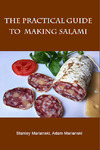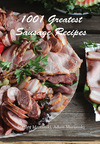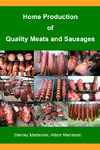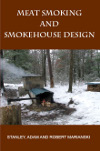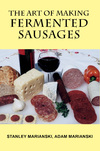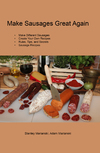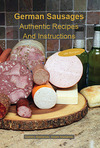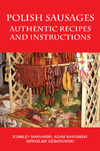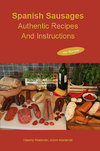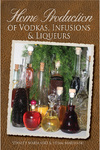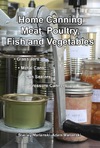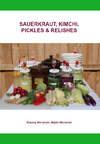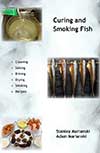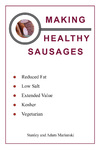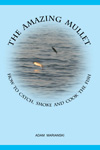Meats and Sausages
Value Added Sausages
Sausages offer a great opportunity to create a new product. Whereas whole meats such as hams, butts, loins, and bacon offer less room to improvise, sausages can be made from countless combinations of meats, spices, and different fillers. Those fillers make it possible to produce nutritious yet very inexpensive products. Let’s assume that a family of eight lives under the same roof, and there are only two hard-working providers. Buying quality meats is out of the question; the family could look for items that go on sale, but this is time-consuming.
What Are Value Added Sausages
When thinking about sausage, we usually imagine in which meat and fat account for 100% of the weight. Some examples are listed below:
- Straight links fresh sausages packed nicely on a tray and wrapped with a clear plastic film such as Bratwurst, Italian Sausage, Hotdogs or Frankfurters
- Ring-shaped smoked sausages packed in blister packs like Polish Smoked Sausage
- Larger diameter straight sausages like Liverwurst, Summer Sausage, Pepperoni or Salami
- Sliced meats and sausages like Ham, Smoked Turkey, Chicken and Bologna
However, there are hundreds of sausages and meat products where meat and fat account only for a part of the product; the other parts occupy fillers and extenders such as rice, soaked dry wheat rolls, breadcrumbs, potatoes, buckwheat and barley groats, tofu, cheese, soy proteins, starches, flour and more. They are not seen in supermarkets, yet they are known worldwide. Those are known as value-added products:
- Blood Sausages
- Head Cheese
- Sausages with Potatoes or Rice
- Meat Loaves
Take, for example, blood sausages, which incorporate fillers such as rusk, barley, bread crumbs, or rice. One can make his version without blood, as buying blood for people living in large cities is nearly impossible to obtain. Potatoes are much cheaper than meat, and you get a lot of value when making Swedish potato sausage, which tastes wonderful.
Boudin, the Cajun classical sausage, is made with rice. Cajun cuisine is a great example of how local conditions dictate the way meat products and sausage are made. A bit of history might strengthen the point. Acadia (what is known today as New Brunswick, Nova Scotia, and Prince Edward Island in Canada) was the first permanent French settlement in North America, established at Port-Royal in 1607. In what is known as the Great Expulsion (le Grand Dérangement) of 1755-1763, during the Seven Years War between England and France (1755-1763), the British ordered the mass deportation of the Acadians. More than 14,000 Acadians (three-quarters of the Acadian population in Nova Scotia) were expelled by the British. Their homes were burned, and their lands confiscated. Families were split up, and the Acadians were dispersed throughout the lands in North America; thousands were transported to France. Gradually, some managed to make their way to Louisiana, creating the Cajun population and culture after mixing with others there. The land they settled on was nothing like the fertile soil of Acadia. The climate was hot and humid; coastal areas abounded with swamps, alligators, and snakes.
The popular crops were wheat, rice, sugarcane, sweet potatoes, peas, cabbage, turnips, and apples, and raised maize as a secondary crop. Barley, oats, and potatoes were also planted as livestock feed, including cattle, pigs, and poultry. These animals provided a steady supply of meat to the former Acadians, which they supplemented with fish. Living in such conditions, Cajuns created a wonderful cuisine that combined the cooking art of Spanish, French, local natives, Filipinos, and other ethnic groups.They have invented a unique style of cooking where fillers play an important part in a sausage formula. Often, the sausage becomes a filler itself and becomes an ingredient of a more elaborate dish, for example, gumbo or jambalaya.
Here presents itself a very attractive solution; why not incorporate fillers into a sausage? This is not a new invention; sausages enriched with a filler material have been produced from the beginning, and many great, time-proven recipes are available. Emulsified sausages can easily incorporate fillers, vegetable proteins, and other ingredients that blend in within the sausage mass. Basically, any combination of meats and filling material that can be stuffed into casings can be called sausage. For example, you have made a quantity of chili, which is ground meat, beans, and chili powder. If you stuff chili into a casing, you will get chili sausage, won’t you? If chili seems to be soupy, thicken it with breadcrumbs or flour. Throw it on the grill or frying pan, and the kids will enjoy the same chili they have been eating, but in a different form.
General Recommendations and Tips
- To increase water binding, add finely ground lean beef.
- You can add about 20% of precooked and minced tripe. This will make the sausage lighter.
- Good filler material: rice, potatoes, onions, bread crumbs, barley, rusk, oats, semolina flour. You can save natural bread rolls, such as Portuguese rolls or French baguettes, as long as they are made from wheat flour. They will dry out and will remain usable. Before use, soak them in water or milk. Then mix with ground meat and other ingredients.
- Add an egg to combine the mixture better. The eggs are added to many sausages, for example German Bockwurst.
- Soy protein concentrate (or isolate) is a natural product that binds water and retains moisture during cooking. The sausage will look plumper. Using more than 3% may change the flavor of the sausage.
- Non-fat dry milk binds water very well. Use about 3-4 percent.
- White of an egg binds all ingredients well together.

